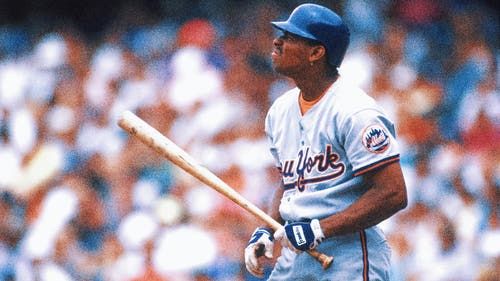
Lucrative 1B contracts a risk for teams
I’m intrigued by the showdown this weekend between Albert Pujols, the Los Angeles Angels’ $240 million first baseman, and Mark Teixeira, the New York Yankees’ $180 million man.
I doubt that any of us will be as fascinated in 2016, the final year of Teixeira’s contract and fifth of Pujols’ 10-year deal.
Both could decline before then.
Heck, both appear in decline right now.
Teams keep reaching long, expensive agreements with slugging first basemen, even amid mounting evidence that such deals are not very good ideas.
“There’s a lot of excitement early,” Brewers general manager Doug Melvin said recently, “and a lot of pain and agony at the end.”
Pujols, who makes his first visit to the new Yankee Stadium this weekend (Saturday, MLB on FOX, 1:10 p.m. ET), could prove an exception, at least in a business sense.
The Angels can afford Pujols at $24 million a year when their new TV deal with FOX will pay them a reported $150 million a year. They might win a World Series or two in the early years of his contract, and they also will benefit from his pursuits of various milestones. Pujols enters the weekend with 445 homers and 2,078 hits, and like all American League first basemen, he eventually can serve as a DH.
Yet, by the time his deal is complete, he will be 41.
Remember how excited the Yankees were to get Teixeira after the 2008 season, particularly when they upstaged their principal rivals, the Boston Red Sox, with the stunning signing?
Teixeira was only 28 then, and the Yankees won the World Series in his first season. But consider the drop in his WAR (wins above replacement) over the past four seasons, according to baseball-reference.com.
2008: 7.3
2009: 5.5
2010: 4.1
2011: 2.4
(Baseball Prospectus and Fangraphs use different formulas to calculate WAR, which measures how many more wins a player would give a team over a replacement-level performer. I am using the statistic in this column mostly to demonstrate trends.)
Teixeira, 32, still could reverse his decline; he has lost 15 pounds and is trying to hit more balls up the middle rather than fixate on the short right-field porch at Yankee Stadium. His 5-for-25 start hardly is cause for alarm. Except for last season, he generally has started slowly.
On the other hand, Teixeira batted .290 in his first eight seasons and .252 in his last two. His doubles total declined sharply and he went a combined 7-for-45 (.180) in the postseason even while averaging 36 homers in 2010-11.
Now consider Pujols’ WAR over the past four seasons:
2008: 9.6
2009: 8.8
2010: 7.1
2011: 5.4
Granted, Pujols missed 15 days with a fractured left wrist last season. He had a big second half, a three-homer game in the World Series and an impressive spring, even though he is only 5-for-23 to start the season.
His 5.4 WAR last season still was All-Star caliber. But it’s certainly fair to ask where he will be three years from now, five years, 10.
And so it goes.
Todd Helton, 38, gave the Rockies good value for much of his nine-year, $141.5 million contract, and the team still ended up hating the deal.
Ryan Howard, 32, suffered a major injury to his left Achilles before even beginning his five-year, $125 million extension, and never was at Pujols’ level or even Teixeira’s to begin with.
The better bets, at the moment, appear to be three younger first basemen — the Tigers’ Prince Fielder, 27, Reds’ Joey Votto, 28, and Red Sox’s Adrian Gonzalez, 29.
Let’s first examine Fielder’s four-year WAR:
2008: 2.1
2009: 6.1
2010: 2.7
2011: 5.2
Those are serious fluctuations in performance, but Fielder’s best days might be ahead, considering his age and yes, his red-hot start with the Tigers.
Votto, meanwhile, appears to be still on the rise:
2008: 3.0
2009: 4.2
2010: 5.9
2011: 6.5
Then there is Gonzalez, who might be the most appealing of all, and not simply because his contract expires in 2018 as opposed to ’20 for Fielder and ’23 for Votto:
2008: 2.9
2009: 6.8
2010: 6.0
2011: 6.9
An argument can be made that the Yankees’ signing of Teixeira forced the Red Sox to trade for catcher/designated hitter Victor Martinez and then replace Martinez with Gonzalez — a series of moves that cost the Sox prospects such as right-hander Justin Masterson, right-hander Casey Kelly and first baseman Anthony Rizzo in the process.
Well, Martinez had an .865 OPS in 183 games with the Red Sox, and the team gained the Nos. 19 and 36 picks in last year’s draft after losing him as a free agent — picks that turned into right-hander Matt Barnes, their No. 8 prospect according to Baseball America, and lefty Henry Owens, their No. 18 prospect.
The Sox didn’t lose any picks they would have by signing Teixeira, and eventually landed a superior hitter, Gonzalez, over a similar age range. One rival executive says that Gonzalez will continue to hit for average even after he loses power — something that Bobby Abreu, for example, did through age 35.
But this is not just about Teixeira and Gonzalez, or even Pujols and Fielder. It will be fun to compare all of the first basemen as the years pass.
The early years, anyway.










